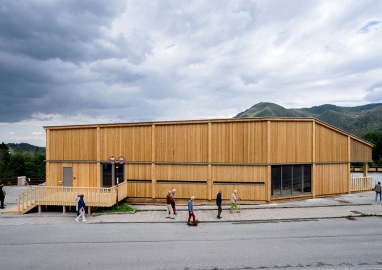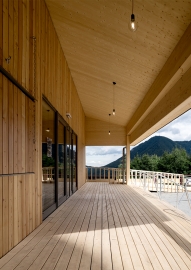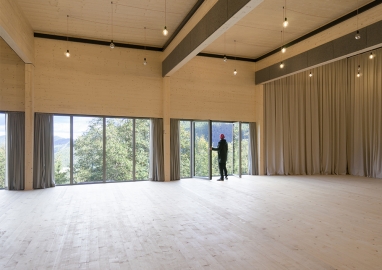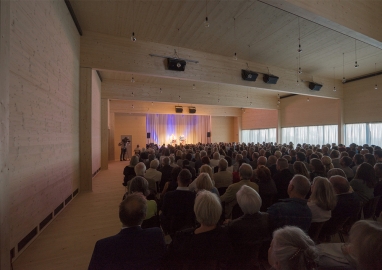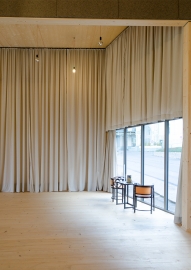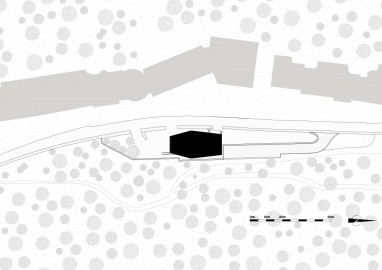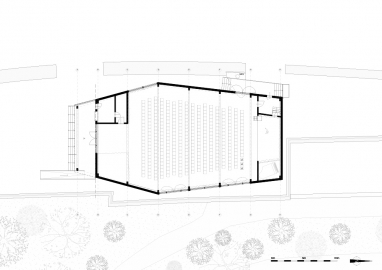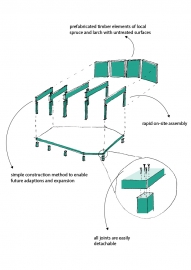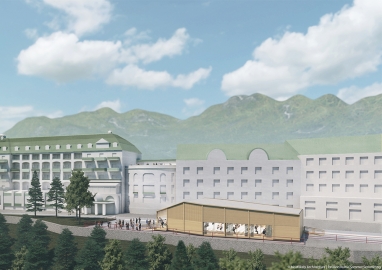Cultural Pavilion Semmering
Mobile concert hall built entirely from regional wood
Semmering is known for its summer resorts and Grand Hotels from the 19th century. The Kultur.Sommer.Semmering has been staging a sophisticated, two-month cultural festival in the mountains since 2015, yet had to find a new venue in the winter of 2022.
The new location at the Grandhotel Panhans required the construction of a new concert hall within a tight four month timeframe due to the hotel's limited space.
The viewing plateau at Grand Hotel Panhans served as the new site for a temporary Cultural Pavilion. Addressing both scheduling constraints and the task of creating a mobile concert hall, the cultural pavilion can be disassembled and relocated in just two weeks. To meet these demands, the Culture Pavilion was designed using large, prefabricated elements for rapid on-site assembly, enabling future adaptations and expansions to cater to upcoming festival seasons.
Form Follows Sound: Following the vision of pianist and artistic director Florian Krumpöck, the pavilion was designed according to high sound-aesthetic standards: From the stage, the space opens up and, together with the wooden surfaces, allows for harmonious sound propagation and acoustics. Thus, the laws of acoustics meet the artistic design of Mostlikely Architecture. The power of reduction continues in the interior: semi transparent curtains, reduced technology and lighting puts the focus on the spatial qualities, the picturesque view and especially the artistic performances.
With panoramic views of the picturesque Semmering mountain backdrop, the concert hall, designed in modern minimalism, playfully blends into the surrounding forest landscape. Large panoramic windows offer a view over the forests almost as far as Vienna. Already in its first season, the Kulturpavillon has welcomed up to 380 guests.
Circular construction: single-grade prefabrication from regional wood
From the beginning, we established high sustainability standards and circular design rules for the project.
Therefore, the decision was made to work with local companies and to build the cultural pavilion entirely from local, certified wood. A total of around 75 tons of spruce and larch were processed, eliminating climate-damaging building materials such as concrete and steel.
All constructions are designed to be easily deconstructed - the surfaces kept natural.
The elements are joined using overlapping joints, cover strips, or cover plates, ensuring that they can be reused after dismantling and for reconstruction.
Additionally, a focus was put on sustainability in the air-conditioning system by creating a natural chimney effect using floor-level air vents in the facade and exhaust vents in the ceiling, supported by mechanical fans on the roof.

